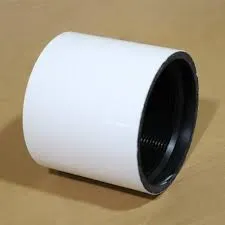- Afrikaans
- Albanian
- Amharic
- Arabic
- Armenian
- Azerbaijani
- Basque
- Belarusian
- Bengali
- Bosnian
- Bulgarian
- Catalan
- Cebuano
- Corsican
- Croatian
- Czech
- Danish
- Dutch
- English
- Esperanto
- Estonian
- Finnish
- French
- Frisian
- Galician
- Georgian
- German
- Greek
- Gujarati
- Haitian Creole
- hausa
- hawaiian
- Hebrew
- Hindi
- Miao
- Hungarian
- Icelandic
- igbo
- Indonesian
- irish
- Italian
- Japanese
- Javanese
- Kannada
- kazakh
- Khmer
- Rwandese
- Korean
- Kurdish
- Kyrgyz
- Lao
- Latin
- Latvian
- Lithuanian
- Luxembourgish
- Macedonian
- Malgashi
- Malay
- Malayalam
- Maltese
- Maori
- Marathi
- Mongolian
- Myanmar
- Nepali
- Norwegian
- Norwegian
- Occitan
- Pashto
- Persian
- Polish
- Portuguese
- Punjabi
- Romanian
- Russian
- Samoan
- Scottish Gaelic
- Serbian
- Sesotho
- Shona
- Sindhi
- Sinhala
- Slovak
- Slovenian
- Somali
- Spanish
- Sundanese
- Swahili
- Swedish
- Tagalog
- Tajik
- Tamil
- Tatar
- Telugu
- Thai
- Turkish
- Turkmen
- Ukrainian
- Urdu
- Uighur
- Uzbek
- Vietnamese
- Welsh
- Bantu
- Yiddish
- Yoruba
- Zulu
Tubing and Casing Solutions for Oil and Gas Industry
Tubing and Casing Essential Components in Oil and Gas Operations
In the realm of oil and gas extraction, tubing and casing play a pivotal role in ensuring the efficient and safe production of hydrocarbons. These components are integral to the well construction process, providing both structural integrity and facilitating the control of fluids during the extraction process.
Casing The Structural Backbone of the Well
Casing refers to the series of steel pipes that are installed in a drilled well. Its primary purpose is to stabilize the wellbore, prevent collapse, and isolate the different geological formations encountered during drilling. Casing is essential for protecting groundwater from contamination by oil or gas, as well as preventing the escape of these hydrocarbons into the surrounding environment.
There are several types of casing, typically categorized by their function and the stage of well completion. The surface casing is the first layer installed, which extends from the ground surface to a predetermined depth, typically to a layer of impermeable rock. This section provides structural support and serves to isolate the groundwater. Beneath the surface casing, production casing is installed to bring hydrocarbons to the surface, and intermediate casing is used to protect the upper formations.
Casing is subjected to various stresses during and after installation, including pressure, temperature changes, and corrosion. Therefore, the material and design of the casing must be carefully selected based on the expected conditions in the well environment.
tubing and casing

Tubing The Direct Path for Production
While casing provides structural support, tubing is the pipe that runs from the production zone to the surface and is the conduit through which oil and gas are transported. Tubing is typically smaller in diameter than casing and is designed to withstand the conditions of production, including high pressures and corrosive substances.
The installation of tubing occurs after the well has been cased and completed. It is fitted inside the production casing, and its primary function is to facilitate the flow of hydrocarbons from the reservoir to the surface. Tubing can be adjusted in diameter and thickness, allowing for flexible adaptation to specific production needs.
In addition to transporting oil and gas, tubing systems often integrate various tools and technologies to enhance production efficiency. These may include downhole pumps, pressure gauges, and monitoring systems that help ensure optimal extraction processes.
Conclusion
In summary, tubing and casing are fundamental components in the oil and gas industry that ensure the effective and safe extraction of natural resources. Casing stabilizes the wellbore and protects the environment, while tubing enables the efficient transport of hydrocarbons to the surface. The successful interplay between these two elements is crucial for the overall productivity and safety of oil and gas operations. As the industry continues to evolve, advancements in materials and technology will enhance the capabilities and efficiencies of tubing and casing systems, driving the future of resource extraction.
-
Tubing Pup Joints: Essential Components for Oil and Gas OperationsNewsJul.10,2025
-
Pup Joints: Essential Components for Reliable Drilling OperationsNewsJul.10,2025
-
Pipe Couplings: Connecting Your World EfficientlyNewsJul.10,2025
-
Mastering Oilfield Operations with Quality Tubing and CasingNewsJul.10,2025
-
High-Quality Casing Couplings for Every NeedNewsJul.10,2025
-
Boost Your Drilling Efficiency with Premium Crossover Tools & Seating NipplesNewsJul.10,2025







